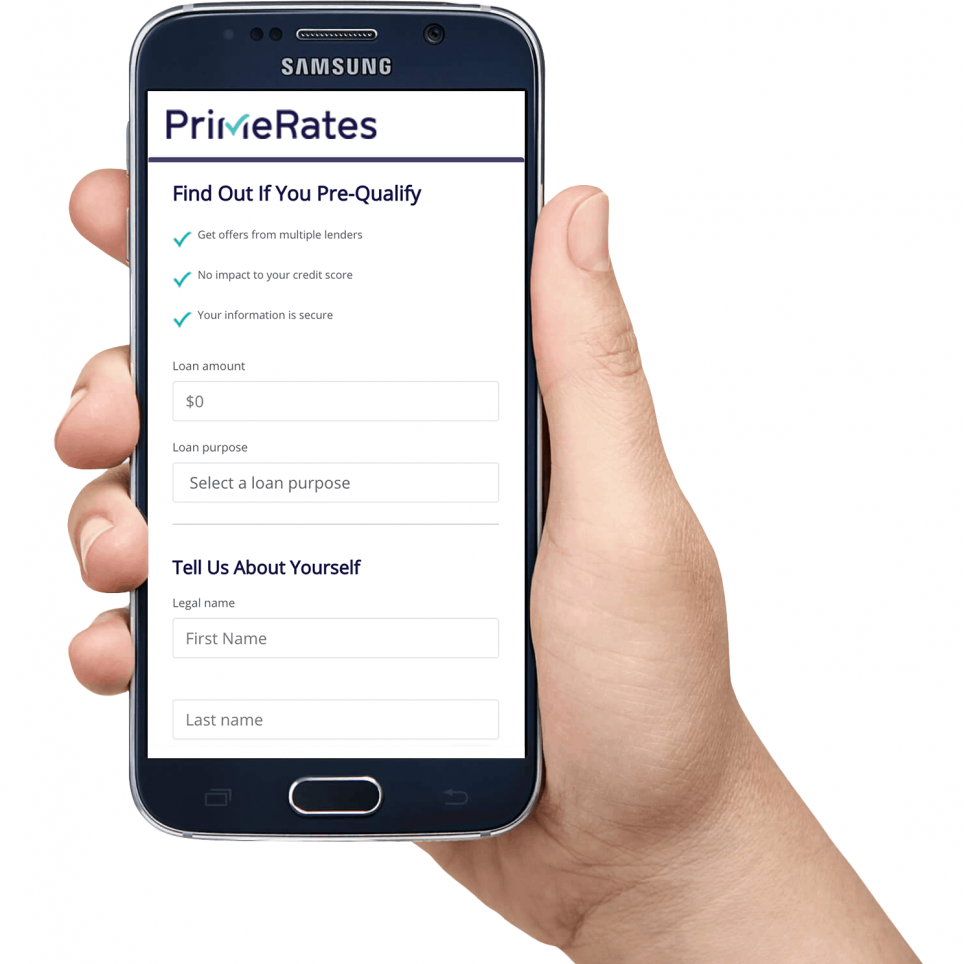| Lender |
APR |
Loan Limit |
Learn More |
 |
5.34% – 35.99%
|
Up to $100,000
|
|
 |
Up to 35.99%
|
Up to $15,000
|
|
 |
18% – 35.99%
|
Up to $20,000
|
|
 |
15.49% – 34.99%
|
Up to $25,000
|
|
*Terms are for unsecured loans and may vary for secured loans.
A car gives you independence. Take away the car, and you’ll quickly feel stuck in the mud.
But if your car is in need of repair, you may find yourself literally stuck in one place. An auto repair loan, or repair financing, can help get you driving again in just a few days. Looking for an auto repair loan? Compare rates.
Best auto repair loans
Your life doesn’t stop after a car accident. After all, 86% of Americans drive to work every day. In other words, there’s no time to save money for a fix you need right now. If you don’t have money already put away for emergencies like this – or simply don’t want to tap into your reserves – auto repair loans will get you back on the road quickly. You’ll get the money you need, as soon as you need it.
And if you have insurance, you likely won’t need to pay the full cost of repairs. Your insurance provider will cover the expenses after you’ve met your deductible. Of course, you’ll still need to reach the deductible. But an auto loan repair will ensure you stay within budget by offering fixed monthly payments and a low interest rate. This will also keep you from adding credit card debt, which usually comes with higher interest rates and fees.
How to find a good deal on auto repairs
While you want to get back on the road as soon as possible, be wary of mechanics who promise unbelievably fast and affordable service. What’s too good to be true probably is. Even if it takes a couple days, spend the time to find a reputable repair shop. With a little bit of research, you can get quality service and save money. Follow these tips:
- Get at least three estimates. Three estimates will give you enough of a comparison to make the best decision for your needs – and your budget. Reach out to well-known repair shops or ones recommended by friends and family.
- Pass on any shop that offers to waive your deductible. Though it sounds like you’re saving, that money has to come from somewhere. The shop is either cutting corners on the parts, or they’re inflating their quote to your insurance company – which could be detrimental to your insurance rate going forward.
- Ask for (legitimate) discounts. Look for discounts online or in your local coupon mailer. If your repair shop doesn’t advertise discounts, don’t be afraid to ask for one. They may offer a special promotion to AARP members or to those who are members of a motor or travel club, such as AAA.
- Call a local vocational school. Vocational or technical schools are a good resource for low-cost — or even free — services. Students need the experience, and you need your car in working order. It’s a win-win. If you’re willing to accept fewer frills and possibly a longer wait time, this is a very economical choice for auto repairs.
Who can get an auto repair loan?
Are you still driving with that new-car smell? You likely have a new car warranty, which can cover mechanical failures and recalls. Used cars often have similar coverage if your dealership sold you on an extended warranty. Even if you purchased your used car from a private seller, run the VIN to see if the car still has a valid warranty. Both new car and extended warranties are transferable.
To cover fender-bender damage, there’s always collision insurance – especially if you have a young driver in the house. Research by law firm Edgar, Snyder & Associates showed that “the most common type of crash for young drivers (16 – 20) is hitting a fixed object.” Using collision insurance to cover minor damage will only cost you a few hundred dollars, depending on your deductible.
Many drivers, however, don’t have a warranty to lean on or opted out of collision insurance to lower their premium. In that case, you can get a repair loan for any damage that costs $1,000 or more. While the legal driving age is 16 in most states, you do have to be 18 years or older to apply for an auto repair loan.
How to avoid predatory lending practices (bad title loans)
When you have bad credit, auto title loans are usually the quickest, easiest way to cover the cost of maintenance or auto repairs. Title loan lenders require you own the car outright, so you can use the car as collateral.
In one day, you’ll be quoted a percentage of the blue book value of your car and get a check for that amount. While it’s fast, it’s risky. You literally hand over the title of your car with the chance of it being repossessed by the lender if you don’t pay back the loan within 30 days.
Because car title loans are designed for drivers with bad credit, the interest rates are extremely high – as much as 300%. Combine that with a monthly fee of 25%, and the loan becomes nearly impossible to repay in time.
Your best bet is to avoid title loans altogether by building your savings and working on improving your credit score. And when you need money right away, consider an auto repair loan first. There are plenty of options for people with bad credit scores or limited credit history.
The best auto repair loans
You’ll find a few lenders offering outstanding auto repair loan products, including:
LendingPoint is best known for helping borrowers with bad credit. You won’t find big loans at LendingPoint or even loans up to $40,000 like you would with LendingClub. You will, however, find it’s easier to get approved. While NetCredit doesn’t require a minimum credit score, their interest rates are among the highest – from 35% up to 155%. LendingPoint hits middle ground with APRs starting at 15.49%. And the highest APR they charge is actually NetCredit’s starting point.
LendingPoint snapshot
![]() |
| APR range |
15.49% — 34.99% |
| Available loan terms |
24 to 48 months |
| Loan amounts |
$2,000 — $25,000 |
| Time to fund |
One business day |
| Origination fee |
0% – 6% |
| Credit score needed |
600 |
| Income needed |
$20,000 |
| Best for |
Borrowers with subprime credit |
Full LendingPoint personal loan review
LendingPoint is an Atlanta-based company. From day one, they have focused on serving borrowers with less-than-perfect credit. Unlike other lenders, LendingPoint looks at more than just your FICO score. It factors in your income, financial history and current credit habits. Are you making an effort to improve your poor credit by paying bills on time and bringing down your debt-to-income ratio? If so, LendingPoint sees potential in you.
Their approach to lending helps people help themselves. Sometimes, bad credit is a result of unforeseen circumstances — a divorce of layoff, for instance — which don’t deserve to be punished. LendingPoint will forgive many of these challenges, so you can have the funds you need as quickly as possible. Many of LendingPoint’s customers receive their loan money the next business day.
Plus, LendingPoint’s payment schedule can be flexible. If you get paid twice per month, you may prefer to make twice-monthly payments toward your loan. With LendingPoint, you can break up your payments just like that. For a $10,000 loan at 24% APR with a 24-month loan term, your monthly payment comes to $529.20. This includes a 6% origination fee, which is the highest origination fee LendingPoint charges.
The biggest benefits of LendingPoint auto repair loans
- Even subprime credit scores may qualify for up to $25,000
- Minimum income requirement is $20,000
- Quick approval process
- Funds are available within one business day
- Flexible payment options
- Soft credit check
The drawbacks of LendingPoint auto repair loans
LendingPoint personal loans start at $2,000, while NetCredit starts their loans at $1,000. Depending on the level of damage to your car, $2,000 may be too much or too little. You’ll also want to take into consideration the average APR. Even the minimum 15.49% may be on the high side of what you can afford. It’s important to calculate those costs and understand how the APR may impact your ability to repay the loan.
How LendingPoint auto repair loans stack up
LendingPoint favors fair-credit customers more than any other lender. If you have good or excellent credit, LendingPoint may not seem like the best option for an auto repair loan. Those with excellent credit may qualify for a better rate with LendingClub, who requires a minimum credit score in the mid-600s. Their rates are almost a third of the cost of LendingPoint. That being said, LendingPoint’s flexible payment options can be beneficial for any type of borrower. Plus, it’s hard to beat next-day financing when the money is being used to repair your car.
Should you apply for a LendingPoint auto repair loan?
If your credit score has been an issue in qualifying for loans in the past, LendingPoint is a good option for you. They make applying for a personal loan simple and efficient. You don’t have to make more than $20,000 to qualify for up to $25,000 — much more than you’ll ever need for an auto repair loan. It is, however, best if you have been in your current job for 12 months or longer.
LendingPoint considers the big picture when approving borrowers for loans, which is beneficial for any level of credit. Even people with excellent credit may prefer LendingPoint, because they’ll receive funds as soon as the next business day. When you need your car to get to work or drive the kids to school, there’s absolutely no time to waste.
How to apply for a LendingPoint auto repair loan
Applying online is quick and simple.
- Visit lendingpoint.com and click APPLY in the top right corner.
- Using their sliding scale, select how much money you need, ranging from $2,000 to $25,000.
- Identify which type of loan you need. For example, if you need financing for a vacation, you’ll select the “vacation” option.
- Enter your name, contact information, income and social security number.
- Once you’ve agreed to the terms and conditions, you will immediately see what loan offers you’re eligible to receive.
- Select the offer that’s best for you, finalize your selection and wait for the internal review.
Most applicants will receive funds in their bank account the next business day.
When to consider an auto repair loan
Auto repair loans are best suited for those who:
- Have car damage greater than $1,000
- Have a high insurance deductible or haven’t yet met their deductible
- Don’t have collision insurance – or have no insurance at all
- Struggles with bad credit and can’t afford to risk a title loan
Types Of Auto Repair Financing
There are several types of car repair loans available to help manage the costs of vehicle maintenance and repairs. Here are some available options:
Personal Loans
Personal loans are a flexible option for auto repair financing, providing a lump sum of money that can be used for various repairs and maintenance. These auto repair loans offer competitive interest rates and flexible repayment terms, ranging from one to several years. Since they are unsecured, meaning they don’t require collateral, your eligibility and the interest rates you receive often depend on your credit score and financial history.
Payday Loans
Payday loans are short-term, high-interest loans that are usually due on your next payday. They provide quick cash for urgent auto repairs when other financing options are unavailable. However, due to their very high interest rates and fees, car repair loans for those with bad credit can be a costly choice and potentially lead to a cycle of debt if not managed carefully. Payday loans are typically used as a last resort due to these risks.
Title Loans
Title loans are secured loans where borrowers use their vehicle title as collateral. They allow you to access quick funds based on the equity in your vehicle. The loan amount typically depends on the value of the car. While title loans can provide immediate financial relief for urgent repairs, they carry high interest rates and the risk of losing your vehicle if you fail to repay the loan as agreed. This makes them a risky option, suitable only when other financing avenues are not feasible.
Alternatives To Car Repair Loans
When facing car repair costs, exploring alternatives to a traditional car repair loan can provide flexible and potentially more affordable solutions. Options like mechanic payment plans, using credit cards, drawing from a savings account, or taking out personal loans each offer distinct advantages and considerations, allowing you to choose the best auto repair loan based on your immediate needs and financial situation.
Mechanic Payment Plan
Many auto repair shops offer their own payment plans, allowing customers to pay for repairs in installments rather than all at once. These plans can vary greatly in length, interest rates, and eligibility criteria. Since these plans are managed directly by the repair shop, they often don't require a traditional credit check, making them more accessible for people with varying credit histories. This option can be particularly convenient if you need repairs done urgently and want to avoid the formalities of traditional lending.
Credit Cards
Using a credit card to pay for car repairs can be an option if you have a card with a low-interest rate or a promotional zero-interest period. Credit cards can offer repayment flexibility and might provide additional benefits like cash back, points, or extended warranties on purchases. Manage this type of financing carefully to avoid high interest charges if you're unable to pay off the balance before the promotional period ends.
Savings Account
A savings account set aside for emergencies or expenses like car repairs is one of the most cost-effective ways to manage repairs. Using your savings helps avoid the need for loans or credit, saving you from interest and fees. Regular contributions to a dedicated savings account can ensure that you are prepared for unexpected expenses, providing financial security and peace of mind.
Personal Loans
Personal loans are a versatile financing option that can be used for a wide range of expenses, including auto repairs. These loans are unsecured and offer fixed interest rates and terms, without collateral, which means you'll know the amount of your monthly payment and when the loan will be paid off.
FAQs About Car Repair Financing
What can auto repair loans cover?
Auto repair loans are versatile, covering a broad spectrum of vehicle-related expenses. These loans can be used for major repairs, like engine rebuilds or transmission overhauls, which can be necessary but often come with a high cost. They can pay for routine maintenance needs including oil changes, brake replacements, and tire rotations that help maintain a vehicle's optimal performance. These loans can finance upgrades and modifications like enhanced audio systems or custom wheels that boost performance. Repairs from collisions or cosmetic enhancements like new paint jobs or exterior part replacements are also covered. Car repair loans can be used to install or fix essential safety features like airbags and stability control systems, ensuring your vehicle remains safe to drive.
How do I apply for auto repair financing?
These are the typical steps to apply for an auto repair financing loan:
Assess Your Needs: Determine the amount you need to borrow based on the estimated cost of the car repairs or upgrades.
Check Your Credit Score: Your credit score can significantly impact your eligibility and the terms of the loan, such as the interest rate. Knowing your credit score beforehand can help you understand what types of loans you may qualify for.
Shop Around: Compare different lenders, including banks, credit unions, and online financial institutions, to find the best terms and rates. Look for lenders that offer loans specifically for auto repairs.
Gather Documentation: Prepare necessary documents that lenders typically require, such as proof of income, identification, and information about your vehicle.
Apply: Once you've chosen a lender, complete their application process. This can usually be done online, in person, or over the phone. Provide all requested documentation and information.
Review the Terms: Before accepting any loan, carefully review the terms and conditions. Pay attention to the interest rate, repayment schedule, and fees associated with the loan.
Accept the Loan: If the terms are agreeable, accept the loan.
PrimeRates simplifies the process of applying online for car repair loans by helping you prequalify with our lender partners, making it easier and faster to secure the financing you need.
Can I get an auto repair loan with bad credit?
You can get a loan for car repairs with bad credit. When looking for auto repair financing with bad credit, shopping around and comparing offers can help you find the best auto repair loan option. Using our Primerates rapid pre-qualification process, we make comparing offers easy for you to access multiple personal loan options. After you're pre-qualified, choose the most suitable offer and complete the application directly with the lender.
Finding the best auto repair loan
Before shopping around for auto repair loans, it’s important that you determine exactly what you need. Carefully read through any warranties you have on the vehicle to assess what’s covered and what’s not. It’s even worthwhile to look up your VIN to see if any warranties are transferable on your used car. And don’t forget to double check your auto insurance plan for collision insurance. You may have coverage you didn’t even realize.
Once you’ve covered all your bases and realized you simply cannot afford the damage, consider an auto repair loan. They are much less risky than a title loan and may even have credit-building benefits if you never miss a payment. LendingPoint offers moderate rates and can get you access to funds quickly. Fast cash cannot be underestimated when you no longer have a way to get to work. Plus, LendingPoint’s flexible payment schedule means you’ll be able to manage the debt your own way.
Bad credit should never pigeonhole someone into accepting a car title loan and put them at risk of losing their car. After all, you’re repairing your car in order to keep driving it. LendingPoint’s personal loans make sure you are well taken care of – even if your credit has hit a bump in the road.





